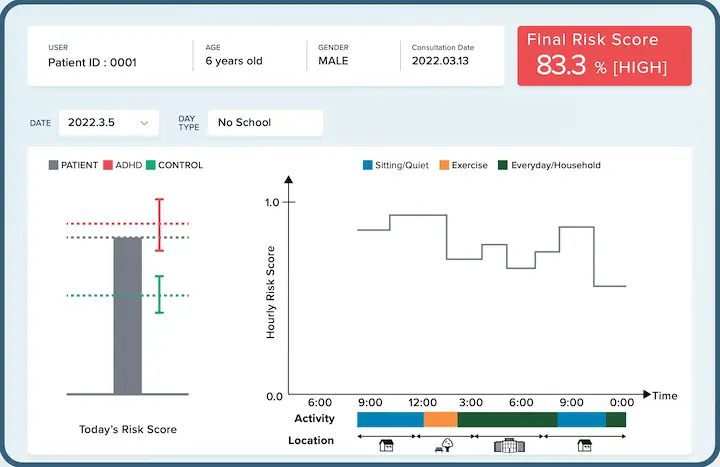LemurDx: Using Unconstrained Passive Sensing for an Objective Measurement of Hyperactivity in Children with no Parent Input

Hyperactivity is the most dominant presentation of Attention-Deficit/Hyperactivity Disorder in young children. Currently, measuring hyperactivity involves parents’ or teachers’ reports. These reports are vulnerable to subjectivity and can lead to misdiagnosis. LemurDx provides an objective measure of hyperactivity using passive mobile sensing. We collected data from 61 children (25 with hyperactivity) who wore a smartwatch for up to 7 days without changing their daily routine. The participants’ parents maintained a log of the child’s activities at a half-hour granularity (e.g., sitting, exercising) as contextual information. Our ML models achieved 85.2% accuracy in detecting hyperactivity in children (using parent-provided activity labels). We also built models that estimated children’s context from the sensor data and did not rely on activity labels to reduce parent burden.